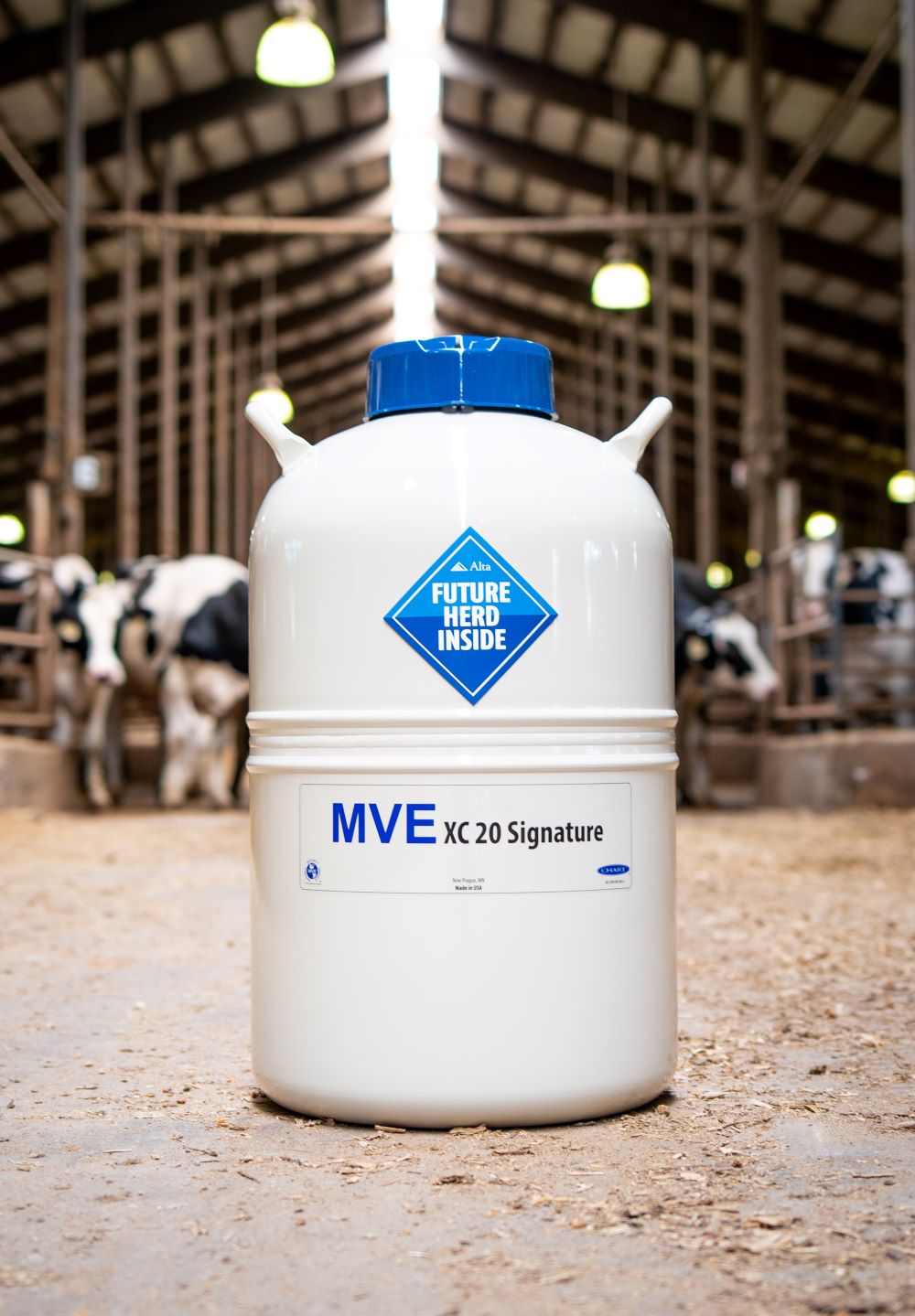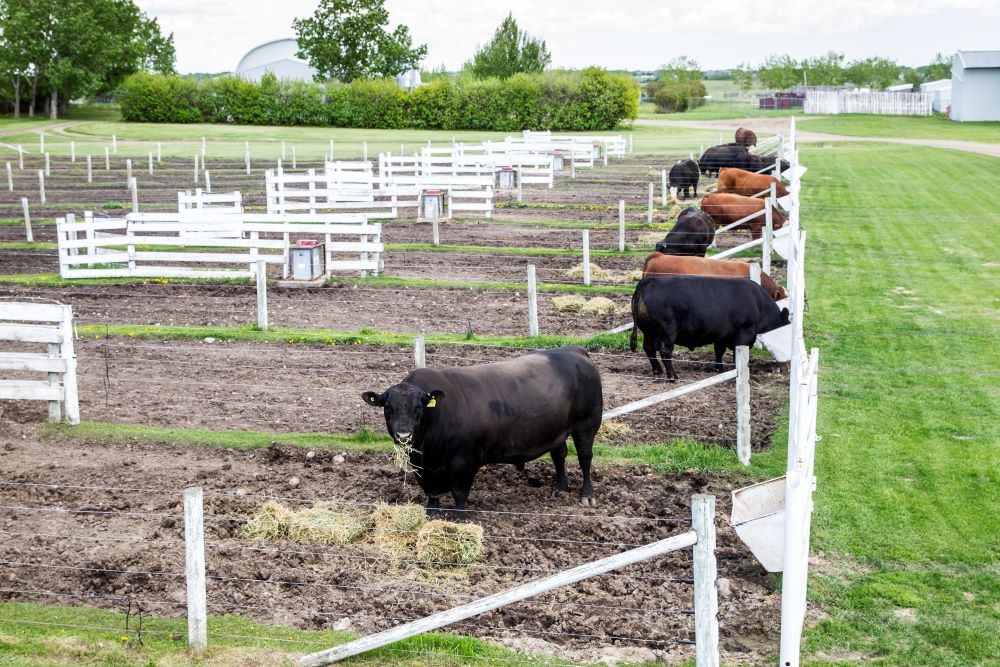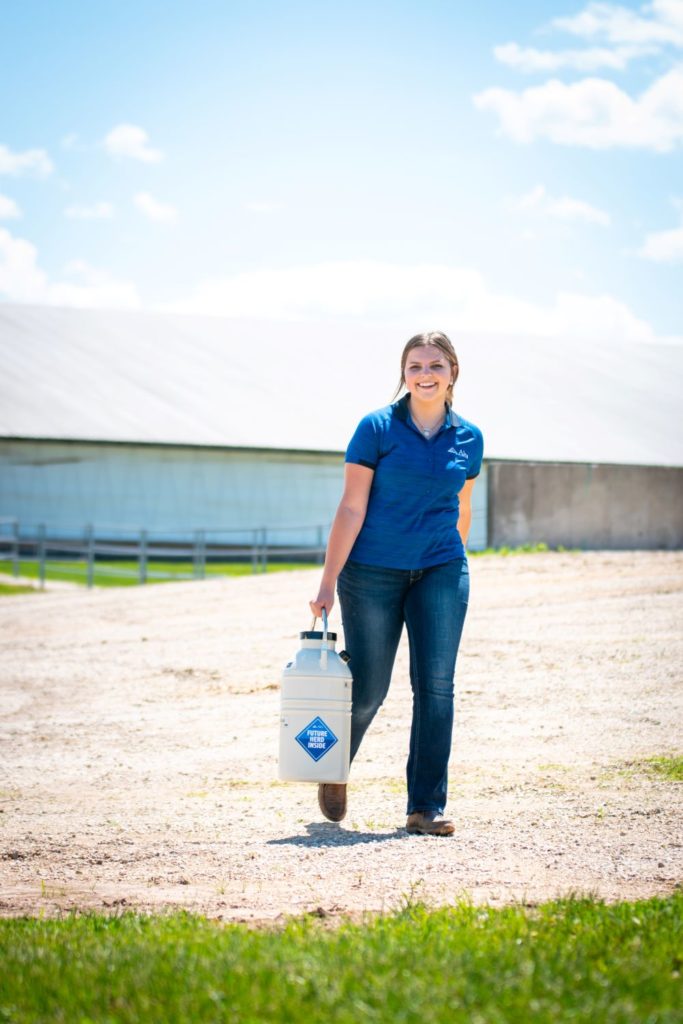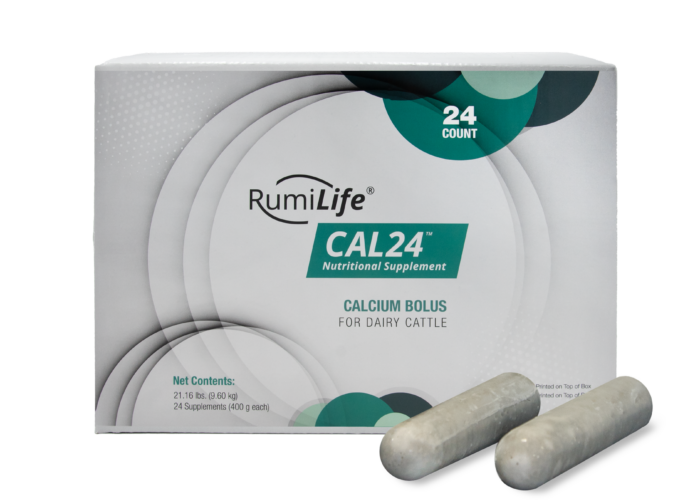Calcium Matters for Fresh Cows
Dietary calcium like like RumiLife® CAL24™ is essential to dairy cattle for bone health, metabolic processes, and most importantly, milk production. Immediately before and after calving, a cow’s need for calcium suddenly increases in preparation for milk production. This drastic increase in calcium demand over a short period of time causes a temporary calcium deficiency known as hypocalcemia. This condition may persist and can lead to subclinical or clinical milk fever, along with an increased risk of dystocia, retained placenta, lethargy, decreased feed intake and ketosis, and ultimately, reduced milk production.
Choose your Calcium Supplementation Carefully
Oral calcium supplementation is a well-proven strategy for reducing hypocalcemia and its associated risks. However, there are only a handful of calcium sources that provide “bioavailable” calcium to the dairy cow. The bioavailability of any nutrient is simply how much of that nutrient is actually absorbed from an ingredient, out of the digestive system, and into the cow for use. So, when using oral calcium as a strategy to reduce hypocalcemia, our choice should be highly dependent on how bioavailable the calcium source is in order to meet the calcium requirement of the cow who has just calved.
Because of its high bioavailability of calcium, many products rely on calcium chloride to provide the rapid boost in blood calcium that is needed to counter hypocalcemia and its risks. However, care must be taken when using predominantly calcium chloride-based products. Calcium chloride goes into solution rapidly, resulting in a quick increase of available calcium to the animal. While this may be beneficial immediately after calving, it does not address the cow’s calcium needs at the most critical time (24-48 hours after calving). Even more concerning is that calcium chloride in high concentrations can damage the mucosal lining of the rumen and abomasum as well as cause a spike in both blood calcium and chloride ion because it is so bioavailable. This spike in blood chloride levels is known to cause metabolic acidosis, and the spike in blood calcium levels can cause normal calcium metabolism feedback to be shut down, causing a quick return to a hypocalcemic state. Further, to best support the sustained need for calcium up to 24+ hours after calving, calcium chloride-based supplements are administered once after calving with a second – and sometimes third – dose provided 8 to 24 hours later. That means additional animal handling for the farm.
Fight Milk Fever with the Calcium Combo of RumiLife® CAL24™
What makes the unique, once-and-done administration of RumiLife® CAL24™ possible is that it does not solely rely on calcium chloride as an available source of calcium. Instead, RumiLife® CAL24™ uses a two-fold approach, supplying a diluted and safe level of calcium chloride for an immediate release supply, as well as the unique ingredient CalMin – a source of calcium that is nearly 100% bioavailable and releases slowly over 24+ hours.
What gives CalMin its slow-release property, is that it is derived from the skeletal remains of a red seaweed algae grown off the coast of Iceland. This gives CalMin a porous, lattice-like structure that protects it from immediate breakdown by the rumen environment. Instead, it dissolves slowly, offering a smooth and sustained release of calcium to the animal, meaning you only need to give it once after calving and not handle the animal additional times.
So in total, the careful formulation of diluted and safe levels of calcium chloride alongside CalMin in RumiLife® CAL24™ is a winning combo for providing the cow with precise amounts of calcium up to 24 hours after calving in just one, two-bolus dose.
For more information about RumiLife® CAL24™, visit .









